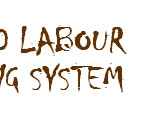|
|
|
| |
|
Stake
|
|
The real management of the quality remains one of many challenges faced by the cocoa sector in
Côte d'Ivoire. This challenge is subdivided into two parts, the technical one, and the ethical
one. |
| |
|
On the technical and operational level, the point is to testify that given the norms required,
the cocoa from Côte d'Ivoire (or the chocolate manufactured) contains the technical and
physico-chemical components required. Beyond the strict respect of usual norms for export
(moisture rate, various types of faulty beans, rate of stranger components, rate of acidity),
this is the whole issue of the introduction of vegetal grass components other than the cocoa butter
within the chocolate, but also the issue of the control of Ochtratoxine A (OTA) disease and
contamination in the cocoa bean. As a reminder, the actual implementation of the European directive,
given the fact that Côte d'Ivoire was powerless to promote the purity of its cocoa and testify
that this compliance was very much more penalizing, due to the significant height of the cocoa exports
from the European Union.
|
| |
|
|
| |
Given the attacks by the pressure groups and non governmental organizations in the media undertaken
towards the chocolate industry and cocoa producers, particularly Côte d'Ivoire, the US lawmaker
granted a deadline to the U.S. chocolate industry re the mention “product without worst forms of child labor ” on the chocolate and other derivative products sold in the American market. In compensation, on September 19, 2001, a protocol was signed between the U.S. chocolate industry and the US administration; the State of Côte d'Ivoire and the International Labor Organization signed as well as witness parties.
This protocol bounds the signing parties to put in place a transparent, independent, credible and
mutually acceptable system before July 1 st 2005. This system has for objective to certify that the process of cocoa production, as well as the derivative products (namely the chocolate) does not use “worst forms of child labor” in conformity with the provisions contained in ILO conventions N° 138 and 182. |
|
|







